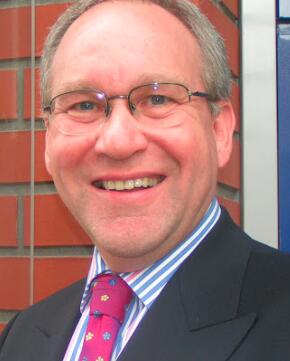

- Volume 15, Number 1, 2025
- Volume 15, Number 2, 2025
- Volume 15, Number 3, 2025
- Volume 15, Number 4, 2025
- Volume 14, Number 1, 2024
- Volume 14, Number 2, 2024
- Volume 14, Number 3, 2024
- Volume 14, Number 4, 2024
- Volume 14, Number 5, 2024
- Volume 14, Number 6, 2024
- Volume 13 Number 1 ( Feb. 2023)
- Volume 13 Number 2 ( April. 2023)
- Volume 13 Number 3 (Jun. 2023)
- Volume 13 Number 4 (Aug. 2023)
- Volume 13 Number 5 ( Oct. 2023)
- Volume 13 Number 6 ( Dec. 2023)
- Volume 12 Number 1 ( Feb. 2022)
- Volume 12 Number 2 ( May. 2022)
- Volume 12 Number 3 (Aug. 2022)
- Volume 12 Number 4 ( Nov. 2022)
- Volume 11 Number 1 ( Feb. 2021)
- Volume 11 Number 2 ( May. 2021)
- Volume 11 Number 3 (Aug. 2021)
- Volume 11 Number 4 ( Nov. 2021)
- Volume 10 Number 1 ( Feb. 2020)
- Volume 10 Number 2 ( May. 2020)
- Volume 10 Number 3 (Aug. 2020)
- Volume 10 Number 4 ( Nov. 2020)
- Volume 9 Number 1 ( Feb. 2019)
- Volume 9 Number 2 ( May. 2019)
- Volume 9 Number 3 ( Aug. 2019)
- Volume 9 Number 4 ( Nov. 2019)
- Volume 8 Number 1 ( Jan. 2018)
- Volume 8 Number 2 (Feb. 2018)
- Volume 8 Number 3 (Mar. 2018)
- Volume 8 Number 4 (Apr. 2018)
- Volume 8 Number 5 (May. 2018)
- Volume 8 Number 6 (Jun. 2018)
- Volume 8 Number 7 (Jul. 2018)
- Volume 8 Number 8 (Aug. 2018)
- Volume 8 Number 9 (Sep. 2018)
- Volume 8 Number 10 (Oct. 2018)
- Volume 8 Number 11 (Nov. 2018)
- Volume 8 Number 12 (Dec. 2018)
- Volume 7 Number 1 (Jan. 2017)
- Volume 7 Number 2 (Feb. 2017)
- Volume 7 Number 3 (Mar. 2017)
- Volume 7 Number 4 (April. 2017)
- Volume 7 Number 5 (May. 2017)
- Volume 7 Number 6 (Jun. 2017)
- Volume 7 Number 7 (Jul. 2017)
- Volume 7 Number 8 (Aug. 2017)
- Volume 7 Number 9 (Sep. 2017)
- Volume 7 Number 10 ( Oct. 2017)
- Volume 7 Number 11 ( Nov. 2017)
- Volume 7 Number 12 ( Dec. 2017)
- Volume 6 Number 1 (Jan. 2016)
- Volume 6 Number 2 (Feb. 2016)
- Volume 6 Number 3 (Mar. 2016)
- Volume 6 Number 4 (Apr. 2016)
- Volume 6 Number 5 (May 2016)
- Volume 6 Number 6 (Jun. 2016)
- Volume 6 Number 7 (Jul. 2016)
- Volume 6 Number 8 (Aug. 2016)
- Volume 6 Number 9 (Sep. 2016)
- Volume 6 Number 10 (Oct. 2016)
- Volume 6 Number 11 (Nov. 2016)
- Volume 6 Number 12 (Dec. 2016)
- Volume 5 Number 1 (Jan. 2015)
- Volume 5 Number 2 (Feb. 2015)
- Volume 5 Number 3 (Mar. 2015)
- Volume 5 Number 4 (Apr. 2015)
- Volume 5 Number 5 (May 2015)
- Volume 5 Number 6 (Jun. 2015)
- Volume 5 Number 7 (Jul. 2015)
- Volume 5 Number 8 (Aug. 2015)
- Volume 5 Number 9 (Sep. 2015)
- Volume 5 Number 10 (Oct. 2015)
- Volume 5 Number 11 (Nov. 2015)
- Volume 5 Number 12 (Dec. 2015)
- Volume 4 Number 1 (Jan. 2014)
- Volume 4 Number 2 (Mar. 2014)
- Volume 4 Number 3 (May 2014)
- Volume 4 Number 4 (Jul. 2014)
- Volume 4 Number 5 (Sep. 2014)
- Volume 4 Number 6 (Nov. 2014)
- Volume 3 Number 1 (Jan. 2013)
- Volume 3 Number 2 (Mar. 2013)
- Volume 3 Number 3 (May 2013)
- Volume 3 Number 4 (Jul. 2013)
- Volume 3 Number 5 (Sep. 2013)
- Volume 3 Number 6 (Nov. 2013)
- Volume 2 Number 1 (Jan. 2012)
- Volume 2 Number 2 (Mar. 2012)
- Volume 2 Number 3 (May 2012)
- Volume 2 Number 4 (Jul. 2012)
- Volume 2 Number 5 (Sep. 2012)
- Volume 2 Number 6 (Nov. 2012)
2025
2024
2023
2022
2021
2020
2019
2018
2017
2016
2015
2014
2013
2012
2011
- ISSN: 2010-3646 (Online)
- Abbreviated Title: Int. J. Social. Scienc. Humanit.
- Frequency: Bimonthly
- DOI: 10.18178/IJSSH
- Editor-in-Chief: Prof. Paul Sudnik
- Executive Editor: Ms. Jenny Chiang
- Abstracting/ Indexing: Google Scholar, Crossref
- APC: 500 USD
- E-mail: ijssh.editorial.office@gmail.com

Prof. Paul Sudnik
Munich University of Applied Sciences, Germany
As the Editor-in-Chief of IJSSH, I invite you to contribute your scholarly work to our esteemed publication. The journal publishes papers which focus on the advanced researches in the field of all aspects of social science and humanity. I'll endeavour to make this journal grow better and hopefully it will become a recognized journal among researchers and scholars in related fields.

DOI: 10.7763/IJSSH.2014.V4.370
Recipients‟ Perceptions Regarding Transplantation of Surgically Restored Cancerous Kidneys in Japan
Index Terms—Living donor transplantation, recipients’ perceptions, restored kidney transplantation, shortage of organs.
Miyako Takagi is with the University Research Center, Nihon University, 4-8-24, Kudan-minami, Chiyoda-ku, Tokyo, 102-8275, Japan (e-mail: takagi.miyako@ nihon-u.ac.jp).
Cite: Miyako Takagi, " Recipients‟ Perceptions Regarding Transplantation of Surgically Restored Cancerous Kidneys in Japan," International Journal of Social Science and Humanity vol. 4, no. 4, pp. 311-315, 2014.